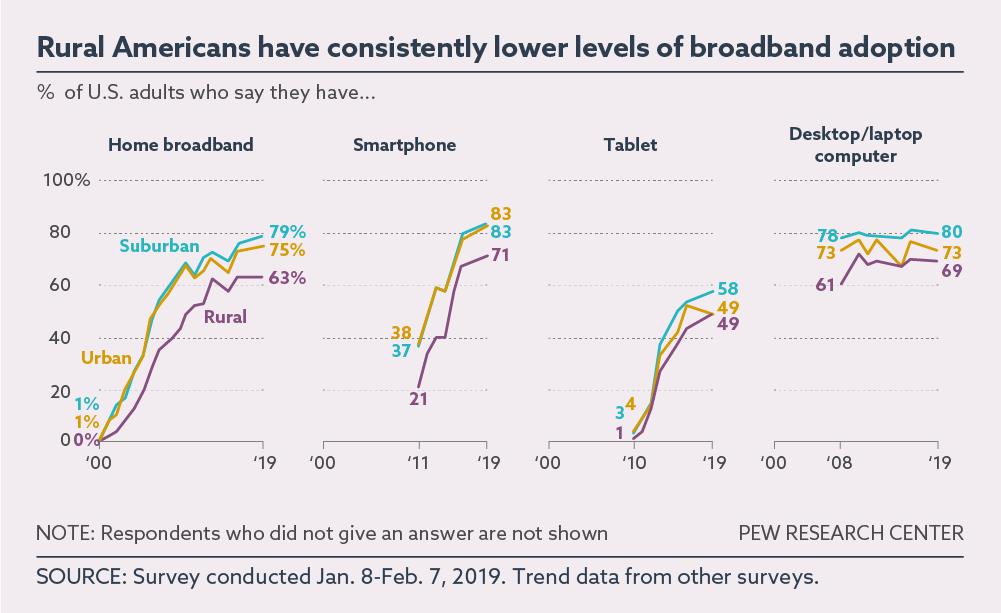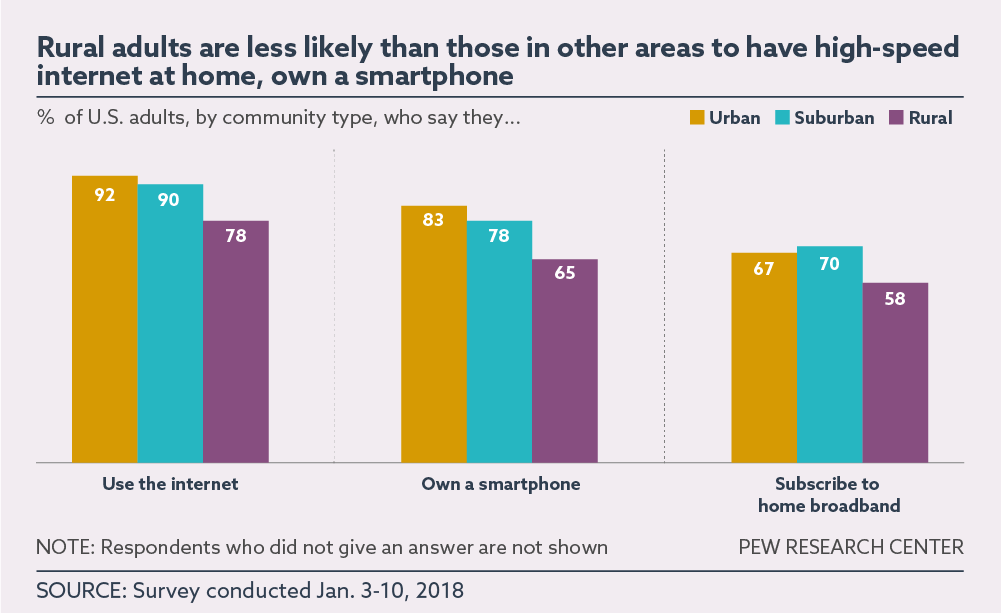Digital divide in the USA persists

A recent survey by the Pew Research Center shows that although inhabitants of rural regions are increasingly adopting digital technology, they are less likely to have home broadband or own a smartphone than urban or suburban adults.
In fact, rural Americans are 12% less likely than to have home broadband that their urban and suburban counterparts and are also less likely to own multiple devices or services they can use to go online.
People in rural areas go online less frequently than people in urban and suburban areas. 76% of adults in rural communities say they use the internet on at least a daily basis, compared with to 86% and 83% of people in suburban and urban areas respectively.
Another survey conducted by the Center in 2018 shows that getting access to high-speed internet was seen as a major problem by 24% of adults in rural areas. Amongst urban adults, this percentage was 13%; amongst suburban adults it was 9%. These concerns were equally prevalent across income categories and educational levels. This survey indicated that 22% of adults living in a rural area don’t use the Internet at all: twice as many as among urban or suburban residents. Substantial parts of rural America don’t have the infrastructure required for high-speed Internet. Existing access is also generally slower than that it is in other areas.
The Federal Communication Commission (FCC) 2018 Broadband Deployment Report shows that 80 percent of the 24 million American households that do not have reliable, affordable high-speed internet are in rural areas. The FCC Connect America Fund, currently in Phase II, aims to expand broadband access and mobile coverage for rural communities in the U.S.






